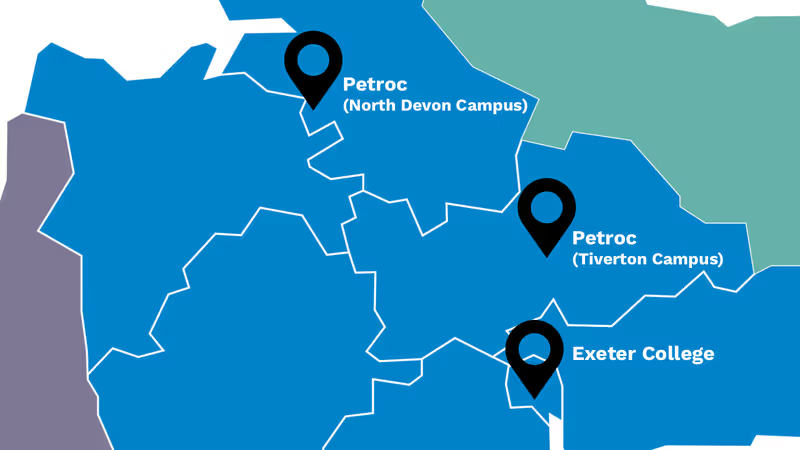Of all the South West peninsula transport schemes that the government could fund – there are plenty of well-evidenced options for both road and rail – Dawlish line resilience may have the greatest strategic importance, at least for South Devon, Plymouth and Cornwall.
First opened between Exeter and Teignmouth by the South Devon Railway Company in 1846, the line forms part of the Great Western Railway trunk route between Paddington and Penzance.
It follows the River Exe to Dawlish Warren then runs beneath sea cliffs to Teignmouth, after which it continues to Newton Abbot and beyond.
The sea wall that protects the four mile stretch that runs alongside open sea has been prone to damage since the line opened. Storms and cliff falls have frequently caused extensive damage, temporarily closing the one or both tracks on 22 occasions.
There have also been long uneventful periods in the open sea section’s history. No significant damage occurred for the half-century between storms in the winter of 1872-73 and cliff falls in 1923, and most of the post-war period was incident-free.
Unsurprisingly, proposals for new inland routes began within a few years of the line opening. In 1939 construction of the “Dawlish Avoiding Line” began before being abandoned when war broke out.
Then the central section of the LSWR Exeter to Plymouth railway, which had run north and west of Dartmoor through Okehampton and Tavistock since 1876, was closed during the Beeching cuts in 1968 in favour of the coastal line.
So when, after fifty years without significant damage at Dawlish, the line had to be closed in 1986 the rest of the peninsula was severed from the national rail network for nearly a week. Five more closures followed. Passing trains were damaged by wave-driven shingle, tracks were flooded by waves and passengers on one immobilised train had to be evacuated by the fire brigade.
Then on 4 February 2014 around 40 metres of the sea wall and the ballast supporting the tracks behind was washed away with further damage to the sea wall, track and Dawlish station itself following two days later.
 February 2014 breach in South Devon Railway sea wall at Dawlish.
February 2014 breach in South Devon Railway sea wall at Dawlish.
Photo: Wikimedia Commons under Creative Commons license.
Repairs took two months to complete, costing £35 million. Network Rail set up the South West Rail Resilience Programme to protect the line from future storm damage and cliff falls in response.
Four of five phases have so far been delivered. These have included strengthening and raising a 415 metre section of the sea wall at Dawlish and adding a 105 metre rockfall shelter north of Parsons Tunnel with cliff protection measures between the two.
The programme’s fifth and final phase was intended to protect the 1.1 mile section of the railway between Teignmouth and Parsons Tunnel from cliff falls.
However rail minister Peter Hendy, in a letter sent to Truro and Falmouth MP Jayne Kirkham after a meeting of MPs held in November, said it was “expected to cost substantially more than the other four phases combined” – a total of £165 million.
Adding that it was “currently not funded” he said it would be considered as part of the government’s 2025 spending review.
A Westminster Hall debate on Devon rail services took place the day after the letter was sent. Exeter MP Steve Race described the fifth phase optimistically as “a vital part of the project that is yet to be signed off” but Transport minister Simon Lightwood did not mention it when he spoke in response.
 Dawlish sea wall being repaired in May 2020.
Dawlish sea wall being repaired in May 2020.
Photo: Wikimedia Commons under Creative Commons license.
Six months passed. When Chancellor Rachel Reeves delivered her spending review speech to the House of Commons in June she ranged across the UK, name-checking 45 places in turn.
Neither Exeter nor Plymouth nor anywhere else in the South West peninsula got a mention, much as in the spending review document itself.
Then last week, in a transport funding announcement following the review that was billed as “the biggest boost to England’s transport infrastructure in a generation”, the government announced that the South West Rail Resilience Programme had been shelved, leaving its final phase undelivered.
At the same time it confirmed that the replacement of the ageing A379 Bridge Road Countess Weir swing and bascule bridges that cross Exeter Ship Canal and the enlargement of M5 Junction 28 beside Cullompton – intended to mitigate the impact of 5,000 new dwellings being built at Culm Garden Village – were both also on hold.
It said the only Devon rail scheme it would fund was the re-opening of a railway station at Cullompton beside M5 Junction 28, first announced in 2023 by the previous government.
It also said it would fund three road schemes to increase capacity at Plymouth junctions including A38 Manadon Interchange and A38 Marsh Mills and Weston Mill junctions and along the A382 between Drumbridges and Newton Abbot.
The only Cornwall transport scheme included in the announcement is for accessibility improvements at Bodmin Parkway, but only for a feasibility study, not the money to do the work.
 South West peninsula 2025 spending review road and rail investment map.
South West peninsula 2025 spending review road and rail investment map.
Source: Department for Transport.
Steve Race nevertheless found plenty to like in the spending review funding decisions. In an opinion piece published by Devon Live the following week he said it showed “what can happen when a government chooses to invest in people and places”.
Citing national NHS and education budgets, he struggled to find Exeter-specific spending to highlight.
On transport, apart from an extension to the bus fare cap, which the National Audit Office has since said did not address bus use barriers such as poor service frequency or reliability even before it was increased to £3, all he could find to say was that Cullompton would be getting a new station.
On the day of the transport funding announcement he popped up once more in local media. Instead of again extolling Cullompton station he was depicted welcoming an Exeter city centre crime “crackdown”. It must have been a slow news day.










